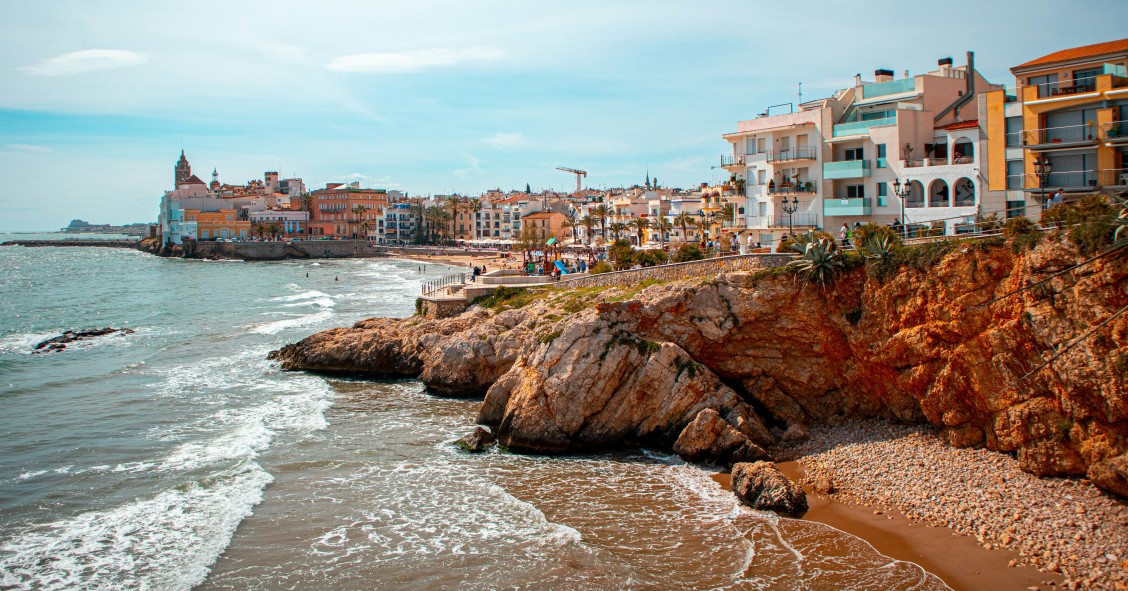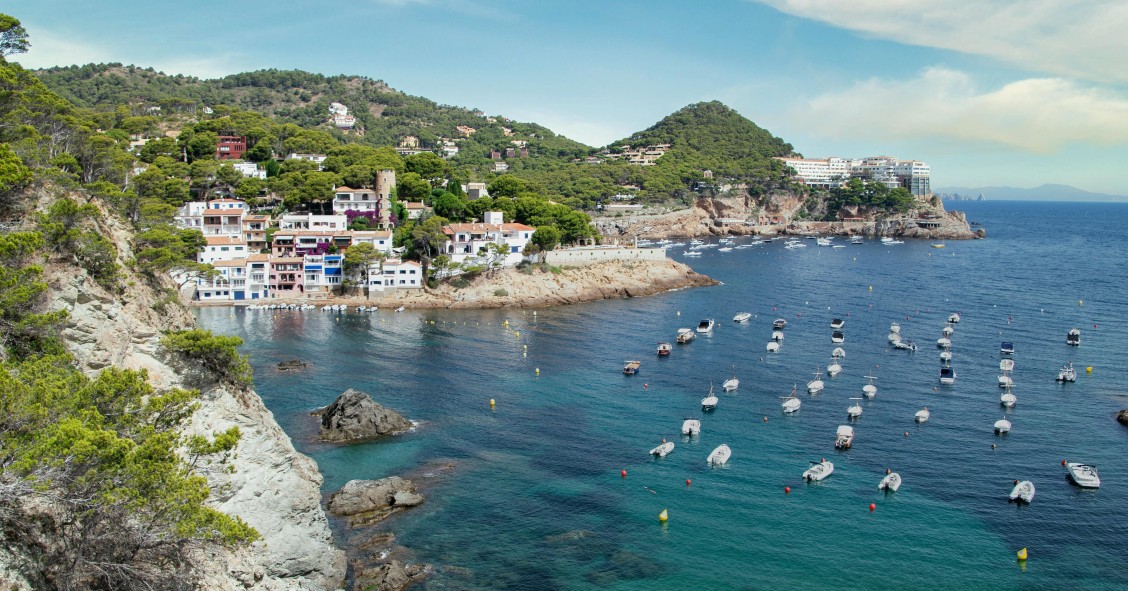
If you're looking for a truly unique and exhilarating Spanish festival, Valencia’s Fallas should be at the top of your list. Known locally as Falles in Valencian, this world-famous celebration takes over the city from 1st to 19th March 2025, culminating in an unforgettable fiery spectacle from 15th to 19th March.
But what exactly is the Fallas festival? It’s an explosion of art, tradition, and spectacle, where the streets come alive with colossal papier-mâché sculptures, dazzling fireworks, lively music, and traditional Valencian attire. At its heart are the "fallas"—intricately designed monuments, often satirical and thought-provoking, that transform Valencia into an open-air gallery for weeks. Then, in a dramatic finale, the entire city watches as these masterpieces are set ablaze in the ultimate farewell to winter.
Ready to discover more about this one-of-a-kind festival? Let’s dive in!
- Fallas Valencia 2025 dates
- Las Fallas history
- What happens during the Fallas de Valencia?
- What is the most important day of Las Fallas?
- Why is Las Fallas important?
- Do people dress up for Las Fallas?
- What food is eaten during Las Fallas?
- Fallas Valencia 2026 dates
- Valencia: Spain’s city of arts and sciences
Fallas Valencia 2025 dates
- When: 1st - 19th March 2025
- Where: Valencia, Spain
- Website: visitvalencia.com
Las Fallas history
For the first half of March 2025, Valencia is getting its fiesta on. Fireworks, gunpowder and street art are the main order of the day during the festival par excellence of the city. In the festival, valencianos and valencianas, the citizens of the city, and all visitors, celebrate the arrival of spring with a full programme of events.
But when did Las Fallas start? The origins of Las Fallas can be traced back to the Middle Ages, when carpenters would celebrate the arrival of spring by burning their old tools and wooden scaffolding. Over time, the festival evolved to include the creation of elaborate wooden sculptures, often satirical in nature, which would be burned in public squares.
What happens during the Fallas de Valencia?

Today, Las Fallas stands as one of Spain’s most spectacular cultural events, drawing visitors from around the world. Beyond the impressive fallas, the festival bursts with parades, fireworks displays, concerts, and traditional dances, creating an electrifying atmosphere throughout Valencia.
At the heart of the celebration are over 800 striking ninots—intricately crafted figures made of wood, cardboard, and other materials. These giant satirical sculptures cleverly depict political and social themes, transforming the city into an open-air museum. Collectively known as fallas, they stand proudly in Valencia’s streets as temporary art installations before meeting their fiery fate. In the grand finale, la cremà, all but one—the ninot indultat, saved by public vote—are set ablaze in massive bonfires, symbolising renewal and the start of a new Fallas cycle.
One of the festival’s most thrilling traditions is the daily Mascletà, a deafening, rhythmic fireworks display that shakes the Plaza del Ayuntamiento at midday, thrilling both locals and visitors alike.
What is the most important day of Las Fallas?
The most important day of Las Fallas is 19th March, known as La Cremà. This is the festival’s grand finale, when all the fallas sculptures are set ablaze in spectacular bonfires across Valencia. The event symbolises renewal and the arrival of spring. The fallas infantiles (children’s sculptures) burn earlier in the evening, while the main monuments go up in flames later, with the last fire traditionally consuming the falla in Plaza del Ayuntamiento.
Why is Las Fallas important?
Las Fallas is important because it represents Valencia’s cultural identity, history, and traditions. Rooted in centuries-old customs, it combines art, satire, and community spirit through its impressive fallas sculptures, fireworks, and traditional attire. The festival honours Saint Joseph, the patron saint of carpenters, and symbolises renewal, as the burning of the sculptures (la cremà) marks a fresh start. Additionally, Las Fallas boosts tourism and the local economy, attracting thousands of visitors and showcasing Valencia’s rich heritage on a global stage.
Do people dress up for Las Fallas?
Yes, many people dress up for Las Fallas, especially those participating in the official events. Women wear traditional Valencian dresses, featuring intricate embroidery, silk fabrics, and elaborate hairstyles adorned with decorative combs (peinetas). Men wear historic attire, including waistcoats, sashes, and embroidered jackets. These outfits are most commonly seen during the Ofrenda de Flores, a floral offering to the Virgin Mary. However, most visitors dress casually, though some wear themed accessories to join in the festive spirit.

What food is eaten during Las Fallas?
The Fallas food in the city of Valencia is mainly buñuelos de calabaza, which are like sweet pumpkin-flavoured donuts that are often served with hot chocolate for dipping. You can also drink horchata, a creamy drink made with nuts.
There are parade floats, food, fireworks, street parties with open-air concerts, traditional costumes and much, much more at the Fallas festival in Valencia.
Fallas Valencia 2026 dates
The main Fallas festival in Valencia in 2026 will take takes place from March 15th to March 19th. These dates mark the main days of the celebration, with various events, parades, and the burning of the fallas happening throughout this period. However, preparations and festivities often start earlier, and some activities may extend beyond March 19th. It's always a good idea to check the official schedule closer to the date for specific event timings and details.
Valencia: Spain’s city of arts and sciences
Valencia is one of the most important Spanish cities, being the third largest after Madrid and Barcelona and the capital of the province of the Autonomous Community of Valencia. It overlooks the beautiful shores of the Mediterranean Sea. The undisputed landmark of Valencia is the modern City of Arts and Sciences, a modern architectural complex of museums, an opera house and the Oceanarium sea life centre.
Other points of interest in Valencia are the Cathedral, the Miguelete, the Torres de Serranos, the Torres de Quart and the Lonja de la Seda, which has been declared a UNESCO World Heritage site.
Valencia is great to visit at any time of year, but the tourist interest goes through the roof at the beginning of March, when the city celebrates one of the most popular festivals in the whole of Spain: the Fallas festival.






